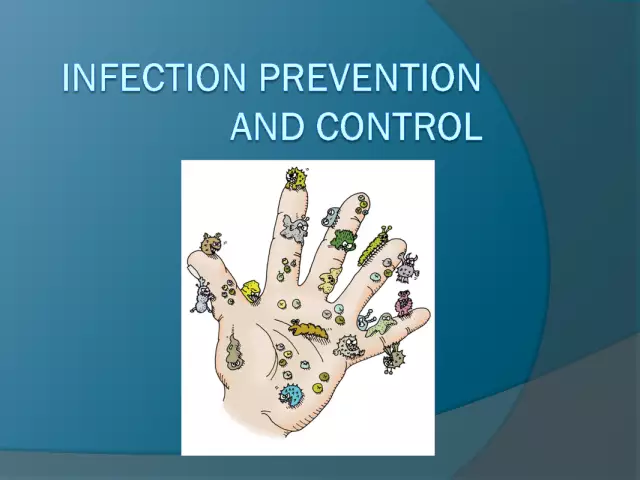- Author Rachel Wainwright [email protected].
- Public 2023-12-15 07:39.
- Last modified 2025-11-02 20:14.
Cytomegalovirus
Why is cytomegalovirus considered one of the most insidious diseases of our time?

In order to answer this question, it is necessary to have at least a general idea of what constitutes cytomegalovirus. The insidiousness of cytomegalovirus lies in the fact that, having penetrated into the human body, the pathogens remain in it forever, and in the vast majority of infected people, the disease proceeds in a latent form. Accordingly, when a cytomegalovirus diagnosis is made, treatment often begins too late, which, in turn, leads to the development of inflammatory processes.
The activation of cytomegalovirus occurs due to a strong and prolonged decrease in immunity, caused, for example, by pregnancy, AIDS or regular medication that affects the body's defense systems.
Infection routes
Cytomegalovirus was discovered back in 1956. Currently, it is found in 10-15% of adolescents and 40% of adults. This widespread occurrence is due to the tendency of the pathogen to persist for life (preservation) inside the human body. With normal immunity, the causative agents of cytomegalovirus do not pose a danger, but as soon as the protective barriers are weakened, the cytomegalovirus in children and adults immediately makes itself felt. The only good news is that the infection is hardly transmitted from person to person. As a rule, long-term, close contact with sick people is necessary for direct infection.
The most common routes of infection with cytomegavirus:
- airborne - pathogens enter the body with saliva when kissing;
- sexual - with sperm or mucus of the cervical canal;
- transplacental - cytomegalovirus is transmitted to the fetus during intrauterine development;
- possible infection of the newborn during breastfeeding;
- the infection can be "brought in" during a blood transfusion or organ donor transplant.
Symptoms of cytomegalovirus
Cytomegalovirus symptoms appear within 20 to 60 days. Usually, cytomegalovirus begins acutely and manifests itself in the following symptoms:
- increased body temperature;
- symptoms of general intoxication;
- vegetative-vascular disorders;
- general weakness;
- fast fatiguability;
- profuse salivation;
- the development of inflammatory processes in the genitourinary organs.
In the absence of treatment, cytomegalovirus often flows into a generalized form, in which multiple lesions of various organs and systems are observed. Patients with cytomegalovirus are observed: inflammation of the liver tissue and spleen, pneumonia, bronchitis, vascular lesions of the brain and eyes, enlargement of the submandibular glands, skin rash, inflammation of the joints. The most dangerous cytomegalovirus in children and pregnant women. We will talk about the development of cytomegalovirus in a child's body below. As for expectant mothers, in their case, the infection poses a serious threat to the fetus. Cytomegalovirus is one of the most common causes of miscarriage and the development of serious diseases in the baby, in particular, lesions of the central nervous system. If, with the diagnosis of cytomegalovirus, treatment was started too late,then in 20-30% of cases, the fetus dies even before the onset of normal delivery.
Cytomegalovirus in children

As mentioned above, a sick mother can infect a child both during gestation and after childbirth, by transmitting pathogens along with breast milk. During the early stages of pregnancy, the baby usually dies. In such situations, even a timely analysis for cytomegalovirus does not help, since the fetal immune system has not yet formed, and the pathogens themselves do not respond well to antibiotic therapy. In the later stages, children survive, but cytomegalovirus in any case affects their full development. Making the correct diagnosis is also complicated by the fact that if a baby develops cytomegalovirus, the symptoms of the disease may be completely absent. As a result, the symptoms of cytomegalovirus are detected only when the pathogens have had an irreversible effect on vital systems and organs. However,with normal immunity, the latent form is the lesser of two evils, since latent carriage is widespread among the population, does not cause any inconvenience to the patient and does not harm health.
Treatment of cytomegalovirus
It is necessary to immediately understand that cytomegalovirus infection is incurable. All currently existing drugs allow you to control the number of pathogens in the blood, but cannot completely destroy them. To normalize the patient's condition, doctors use the whole range of drugs that increase immunity and agents from the interferon group that suppress the activity of the virus.
YouTube video related to the article:
The information is generalized and provided for informational purposes only. At the first sign of illness, see your doctor. Self-medication is hazardous to health!






